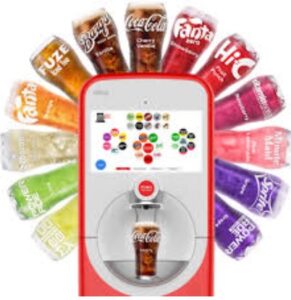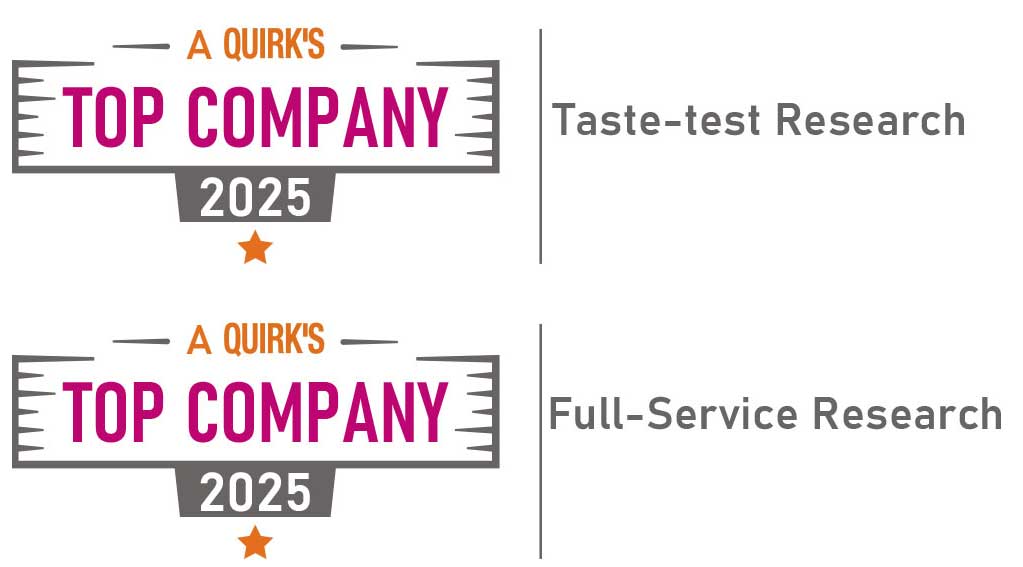Why is innovation so elusive for many Consumer Packaged Goods (CPG) brands? Despite recognizing its importance, the majority of companies fall short in execution. According to a McKinsey report, over 70% of executives view innovation as critical to their growth, yet only 30% feel they are effective at it.
So why do so many companies, despite recognizing the importance of innovation, struggle to execute effectively?
For CPG leaders grappling with stagnant growth and shifting consumer expectations, understanding the barriers to successful innovation is crucial. We’ll address these challenges head-on, so brands can unlock new opportunities, foster loyalty, and stay competitive in an ever-evolving marketplace.
What’s Holding Companies Back From Innovation?
Keren Novack, President of Curion, says “2025 is going to be the year of innovation. We’ve been hearing more clients talk about innovation in the last quarter than they have in the past few years.”
However, innovation is often easier said than done. She goes on to say, “Renovating can also be the new innovation for clients who are more cost-conscious but still want to create something new for the market. Innovation doesn’t have to be totally different or extreme – it can be a slight tweak or a different way about thinking about or approaching something.”
While brands recognize value in innovating, strategies around it are often not hitting the mark. In fact, 80% of CPG companies struggle to innovate effectively, remaining in low-growth “stagnating” or “emerging” modes. Only 20% have successfully scaled their efforts to achieve “future-built” results that drive meaningful impact. We’re breaking down the most common barriers holding CPG companies back and why addressing them is essential for staying competitive.
- Short-Term Pressures: CPG companies face relentless demands to deliver quarterly results, pushing them toward short-term wins.
- Cost Concerns: Innovation comes with risks and uncertainty. These challenges are escalated even more by inflation and ongoing supply chain disruptions, leading many companies to avoid spending where they sense increased risk.
- Organizational Silos: Collaboration is critical to innovation, but companies remain siloed and results in misaligned goals and missed opportunities.
- Misaligned Metrics: Traditional KPIs, like revenue or unit sales, typically dominate how companies measure success, but don’t account for innovation in the long run.
- Customer Disconnect: CPG brands rely heavily on consumer insights, but they often misinterpret or fail to act on what consumers truly need.
The Curion Advantage:
By blending qualitative and quantitative research, Curion uncovers nuanced consumer pain points and motivations, offering a clear roadmap for brands to align their strategies with real consumer needs. From sensory testing to behavioral insights, Curion ensures companies make confident, consumer-backed decisions that balance creativity with practicality.
Breaking Through Innovation Barriers
Brands that adopt bold, forward-thinking strategies and address the barriers holding them back can achieve innovative growth. In speaking with our clients, we learned that brands can transform obstacles into opportunities for growth with these belief systems in place
- Shift to a long-term mindset. Innovators like Unilever and Procter & Gamble created dedicated budgets for innovation, allowing them to experiment without immediate pressure. This actionable step involves treating R&D as a growth driver and prioritizing investments in forward-thinking projects. Example: P&G’s introduction of Tide Pods redefined how consumers interact with laundry detergents, resulting in sustained category growth.
 Embrace risk with controlled experimentation. Successful companies embrace a “fast failure” mindset, testing ideas in smaller markets to refine concepts before scaling up. This actionable step reduces risk and provides valuable insights for larger-scale rollouts. Example: Coca-Cola’s “Freestyle” machines allowed the company to experiment with unique flavor combinations, some of which later became permanent offerings.
Embrace risk with controlled experimentation. Successful companies embrace a “fast failure” mindset, testing ideas in smaller markets to refine concepts before scaling up. This actionable step reduces risk and provides valuable insights for larger-scale rollouts. Example: Coca-Cola’s “Freestyle” machines allowed the company to experiment with unique flavor combinations, some of which later became permanent offerings.
The Curion Advantage:
Through scalable, real-world testing environments, Curion enables brands to simulate market scenarios, refine their concepts, and iterate quickly. Companies can confidently experiment without the fear of costly missteps.
- Break down silos. Companies like Nestlé, Mondelēz, and General Mills support cross-functional teams that work collaboratively toward shared objectives. Example: OREO® partnered with Coca-Cola® to develop a limited-edition cookie that incorporates the classic taste of Coca-Cola®. This cross-category product was developed through close collaboration between their product development, marketing, and consumer insights teams, targeting fans of both iconic brands.
- Redefine success metrics. Companies at the forefront of innovation expand their KPIs to include factors like consumer adoption rates, brand sentiment, and market disruption, helping brands measure the true impact of their innovations over time. Example: Tesla measures market disruption by evaluating the adoption rates of electric vehicles (EVs) and the expansion of its Supercharger network. By focusing on these metrics, Tesla assesses the broader impact of its innovations on the automotive industry and infrastructure development.
 Get closer to the consumer. By directly engaging with target audiences throughout the development lifecycle across all channels companies can work to ensure that products resonate with consumer preferences and emerging trends Example: Doritos engaged Gen Z by launching the All Dressed NPCs campaign , blending gaming, fashion, and exclusivity. Through a custom Fortnite map, a Twitch live event, and social media buzz, the brand brought its bold new flavor to life. This approach boosted sales by 36%, earned 18.8 million PR impressions, and achieved an average of 30 minutes playtime per user, proving its success in connecting with its audience.
Get closer to the consumer. By directly engaging with target audiences throughout the development lifecycle across all channels companies can work to ensure that products resonate with consumer preferences and emerging trends Example: Doritos engaged Gen Z by launching the All Dressed NPCs campaign , blending gaming, fashion, and exclusivity. Through a custom Fortnite map, a Twitch live event, and social media buzz, the brand brought its bold new flavor to life. This approach boosted sales by 36%, earned 18.8 million PR impressions, and achieved an average of 30 minutes playtime per user, proving its success in connecting with its audience.
The Role of Data in Breaking Innovation Barriers
Data is the lifeline of modern innovation, offering insights that guide brands in understanding consumer behavior, predicting future needs, and co-creating products with their audience.
Companies that successfully leverage their data can make informed decisions – not guesswork – that reduce risk and maximize impact.
However, many struggle with data silos, inefficient analysis, or an inability to translate insights into actionable strategies. By capturing behavioral data, brands can observe how consumers interact with products in real-world contexts. Behavioral data provides unfiltered insights into habits, preferences, and pain points that traditional surveys miss. This includes usage patterns or adjustments consumers make to fit products into their routines.
Fitbit analyzed user behavior beyond step tracking, identifying opportunities to address sleep quality and stress management, leading to innovations like sleep monitoring and mindfulness tools. Capturing behavioral data like this requires insights gathered from tools like IoT devices, mobile apps, or loyalty programs. Insights revealed through heatmaps, eye-tracking technology, or smart sensors can also help pinpoint areas where consumers engage or struggle with a product.
The Curion Advantage:
The way we observe consumers, coupled with advanced analytics, uncovers subconscious consumer behaviors that inform groundbreaking innovations.
Predictive analytics uses machine learning and AI to analyze historical and real-time data, identifying patterns that predict future behaviors. This helps brands anticipate trends, manage their supply chain, and launch products at the right time.
PepsiCo utilized predictive analytics to anticipate flavor trends in the beverage market, enabling faster and more precise product development cycles. By analyzing consumer preferences, they developed new flavors that aligned with emerging tastes, leading to successful product launches. Machine-learning algorithms can process large datasets, identifying correlations that are invisible to the human eye. Techniques like clustering and regression modeling allow brands to segment their audience and tailor innovations accordingly.
Engaging consumers directly in product development fosters a sense of ownership and ensures that offerings meet real needs. Methods include crowdsourcing platforms, focus groups, or interactive social media campaigns.
A great recurring example is Ben & Jerry’s, who invites consumers to submit ideas for new ice cream flavors through their website and social media platforms. This past year, they received more than 13,000 flavor suggestions. This crowdsourcing approach allowed fans to contribute to product development, fostering a sense of ownership and community.
Crowdsourcing taps into the collective intelligence of consumers, leveraging their diverse perspectives to drive creativity. Social listening and sentiment analysis further refine these insights, ensuring alignment with broader trends. Brands can use AI-powered sentiment analysis to filter through consumer-generated ideas and prioritize the most viable ones.
Building a Culture That Embraces Innovation without Barriers
Resistance to change is a major barrier to innovation. With innovation, brands need to have the right strategies while also creating a culture where risk-taking is encouraged, failures are learning moments, and every team member feels empowered to share ideas.
To break through, companies need to let go of outdated practices and embrace experimentation. A bold, open-minded culture is the key to staying competitive and driving meaningful innovation.
Consider this in your upcoming meetings:
- How can your company create a culture that supports new ideas and bold thinking?
- What outdated practices are holding your team back and preventing adopting new approaches?
Curion specializes in delivering impactful insights to the world’s top CPG companies, helping them develop winning, repeatedly purchased products. Curion’s deep data-driven product insights, sensory expertise, and state-of-the-art consumer centers enable them to uncover responses to critical client objectives. With over five decades of experience in the product testing industry, Curion is dedicated to guiding clients with their proprietary XP Xperience Performance platform, connecting brands to consumers at every step.
An innovator in the industry, Curion recently developed a groundbreaking benchmarking product testing method, the Curion Score™, which has become a trusted and sought after tool within the industry. As one of the largest product and consumer insights companies in the U.S., Curion has built a reputation for excellence and trust among the world’s leading consumer brands. Curion’s commitment to innovation and expertise, coupled with a passion for delivering actionable insights, makes Curion a valuable partner for companies looking to develop and launch successful products.
